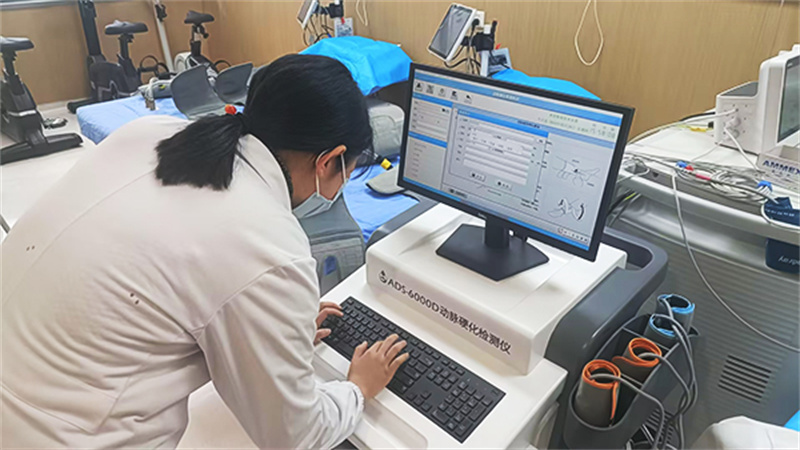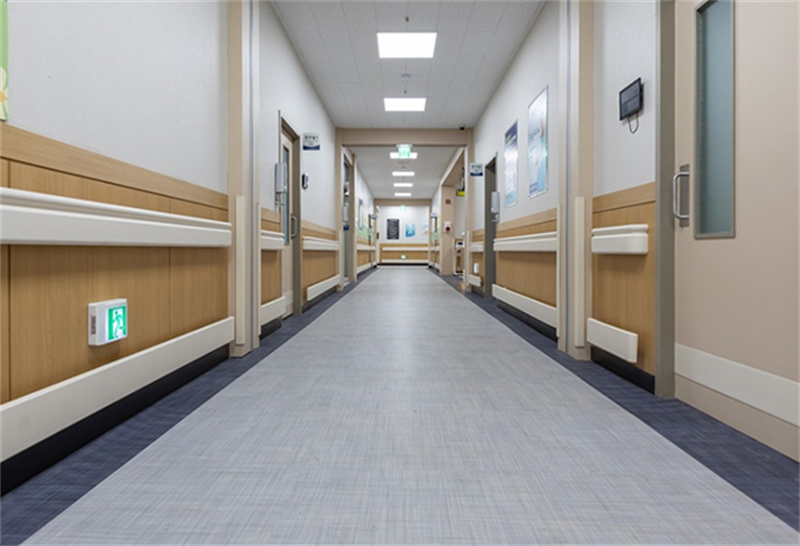The vascular system, as the core of human circulation, its health status is directly related to the quality of life. Arteriosclerosis is a common disease that threatens vascular health. The arteriosclerosis detector, with its scientific detection principle and precise data collection capability, plays an important role in multiple medical scenarios.
Hospital: A key support for disease diagnosis and treatment
Cardiology Department: An important basis for condition assessment and treatment decision-making
In the cardiology department, the arteriosclerosis detector is an important tool for doctors to assess the condition of patients with cardiovascular diseases. For patients with coronary heart disease and hypertension, the detector can quantitatively assess the stiffness and stenosis degree of the vascular wall by precisely measuring key parameters such as pulse wave velocity (PWV) and ankle-brachial index (ABI). For instance, a 55-year-old hypertensive patient with long-term poor blood pressure control was found to have a PWV value significantly higher than the normal range by a detector. By combining clinical symptoms and other examinations, doctors can accurately determine the degree of arteriosclerosis, and then optimize the antihypertensive treatment plan, rationally combine drugs that improve vascular function, to reduce the risk of cardiovascular events and delay the progression of the disease.
Geriatrics: An effective means of health management and disease prevention
The elderly group has a relatively high incidence of arteriosclerosis due to the decline of physiological functions and the influence of various underlying diseases. In geriatrics, the arteriosclerosis detector is an effective tool for implementing health management and disease prevention. By conducting regular tests on the elderly, early lesions such as thickening of the blood vessel walls and formation of atherosclerotic plaques can be detected in a timely manner. For elderly people with hyperlipidemia, once hardened plaques are detected in the lower extremity arteries, doctors can formulate personalized intervention plans based on the test results, including dietary adjustments, exercise guidance and drug treatment, thereby effectively preventing the occurrence and development of atherosclerotic cardiovascular diseases.
Physical examination center: A reliable tool for health screening and risk early warning
In the physical examination center, the arteriosclerosis detector provides the public with scientific vascular health screening services. With the change of modern lifestyle, bad living habits such as staying up late, lack of exercise and high-fat diet have led to vascular health problems gradually affecting younger people. The detector, through non-invasive testing, can objectively assess the vascular health status of the examinees, calculate the vascular age, and provide a basis for the early detection of the risk of arteriosclerosis. For instance, a 35-year-old programmer who has been engaged in high-intensity work for a long time and has an irregular lifestyle was found to have a significantly older vascular age than his actual age after testing. Based on this, doctors can provide targeted health guidance to help him adjust his lifestyle, have regular check-ups, and achieve early prevention and intervention of diseases.
Community health service centers: An important guarantee for primary medical care and health
Community health service centers, as important Windows for primary medical services, undertake the health management of a large number of middle-aged and elderly residents and patients with chronic diseases. The arteriosclerosis detector has become an important guarantee for carrying out primary medical and health services here. By establishing detailed vascular health records for key populations in the community and regularly monitoring their indicators related to arteriosclerosis, the full-process management of chronic diseases can be effectively achieved. Take diabetic patients as an example. Long-term hyperglycemic conditions can accelerate vascular lesions. By detecting the ABI value, lower extremity arterial stenosis can be detected in a timely manner, providing a basis for preventing serious complications such as diabetic foot. Once abnormal ABI values of patients are detected, community doctors can intervene promptly to formulate personalized treatment and rehabilitation plans, effectively improving the quality of life of patients.
Rehabilitation institutions: An important reference for the assessment of rehabilitation efficacy and the adjustment of rehabilitation plans
In rehabilitation institutions, the arteriosclerosis detector is an important reference for evaluating the therapeutic effect of patients recovering from cardiovascular diseases. For patients in the rehabilitation period such as those with myocardial infarction and cerebral infarction, the recovery of vascular function is one of the key goals of rehabilitation treatment. By continuously monitoring indicators such as PWV, doctors can accurately assess the improvement of vascular elasticity and function during the rehabilitation training process. When it is found that the recovery of a patient’s vascular function is slow, the intensity, methods and drug treatment plans of rehabilitation training can be adjusted in a timely manner to ensure the effectiveness of rehabilitation treatment, promote the recovery of the patient’s vascular function, reduce the risk of disease recurrence, and provide strong support for the patient’s smooth recovery.
From professional diagnosis and treatment in hospitals to primary health management in communities and then to therapeutic effect evaluation in rehabilitation institutions, arteriosclerosis detectors play an indispensable role in various medical scenarios. Supported by scientific and precise data, it helps medical workers provide patients with higher-quality and more efficient medical services, which is of great significance for maintaining the vascular health of the general public and improving the overall health level of the nation.
Post time: Apr-22-2025


